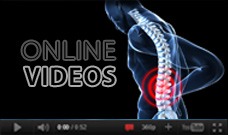Treatment for Pain in the Back: A Retrospective
Early Back Pain Treatments
Back pain is considered as one of the most common health problems since the time of human being existence. Even about 7000 years before the common era (BCE), there is evidence of back pain treatment. Chinese have been treating back pain since 4000 BCE. The first written record related to treatment of back pain dates back to 2500 years BCE.
During different periods of time, different treatments modalities were popular, which were based on the culture and knowledge at that time. During the Stone Age it was believed that evil spirits and devils were responsible for pain and the treatment comprised of drilling holes in the head, for the treatment of pain.
Some civilizations such as Egyptians, Sumerians and Assyrians considered back pain to be an untreatable condition. Therefore no surgical attempts of treatment were popular during that time. However in some cases, non-surgical methods such as massage and plasters, made from the extracts of the plants and herbs having medicinal values, were widely used.
Greek and Roman Back Pain Treatments
The Greek civilization (2900-1150 BCE) tried surgery for treating back pain. From ancient records, it is evident that alternative non-surgical methods such as heat, stretching and spinal manipulation were also employed.
Hippocrates (approx. 460-379 BCE) is considered to be the “Father of Medicine” and was famous for performing brain surgery. His efforts for treating back pain with surgery are questionable. However, he has described other non-surgical methods for treating back pain which include herbs, joint manipulation and adhesive friction.
The famous Roman physician Claudius Galen is renowned for his early contributions in the field of medicine. He had recommended surgery, massage, exercise and diet for the treatment of back pain. He had contributed in the development of treatments that restore balance of the 4 body humors (blood, yellow bile, black bile and phlegm), for understanding the physiological functioning of the human body.
According to a few records, treatment for back pain started in the west during the dark and middle ages. With the revival of learning and culture, the interest in medicine and human physiology was also renewed. Credit for the major contribution in understanding human physiology, during this period, goes to Sir Leonardo da Vinci (1452-1519 BCE) who generated knowledge about the human body through his undercover dissections and graphical descriptions. Therefore he is considered as the father of Anatomic Art. During this period, massage therapy was widely used in the west for back pain treatment.
Development of Surgical Procedures for Back Pain
In 17th century treatment for back pain included rest. Few physicians during this period experimented with open surgery of the spine for back pain treatment. As knowledge on germs and bacteria was not clear at that time, open surgical procedures were performed without sterile or hygiene measures, increasing the risk of infections. During this period barbers and butchers were also involved in performing surgical procedures.
In 18th century, treatment modalities for back pain include manipulation, electrostatic devices, venesection, opening veins, use of parasites and cupping technique. Due to lack of knowledge of human anatomy and anesthesia, open surgery continued to be of limited use.
In 19th century hydrotherapy and magnet therapy were employed for pain management. Narcotics were considered as safe and effective treatment for back pain. In the beginning of the century ether was discovered as an effective anesthetic for performing painless surgeries. Aseptic surgical techniques were used by the middle of the century. The innovation of the X-ray towards the end of the century accelerated the progress in the field of medical science.
20th Century Back Pain Treatments
In 20th century noteworthy advances in the field of medicine and surgery were achieved. Despite the huge list of achievements, the major discoveries include:
- Blood typing
- Antibiotics
- Vaccines for poliomyelitis and measles
- Pharmacotherapy for acute and chronic pain
- Pacemakers
- Immunosuppressive drugs for organ transplantation
- Minimally invasive surgery
- Microsurgical techniques
- Imaging techniques such as CAT and MRI
- Specialized instruments for back and brain surgery such as computer guided navigation
|











